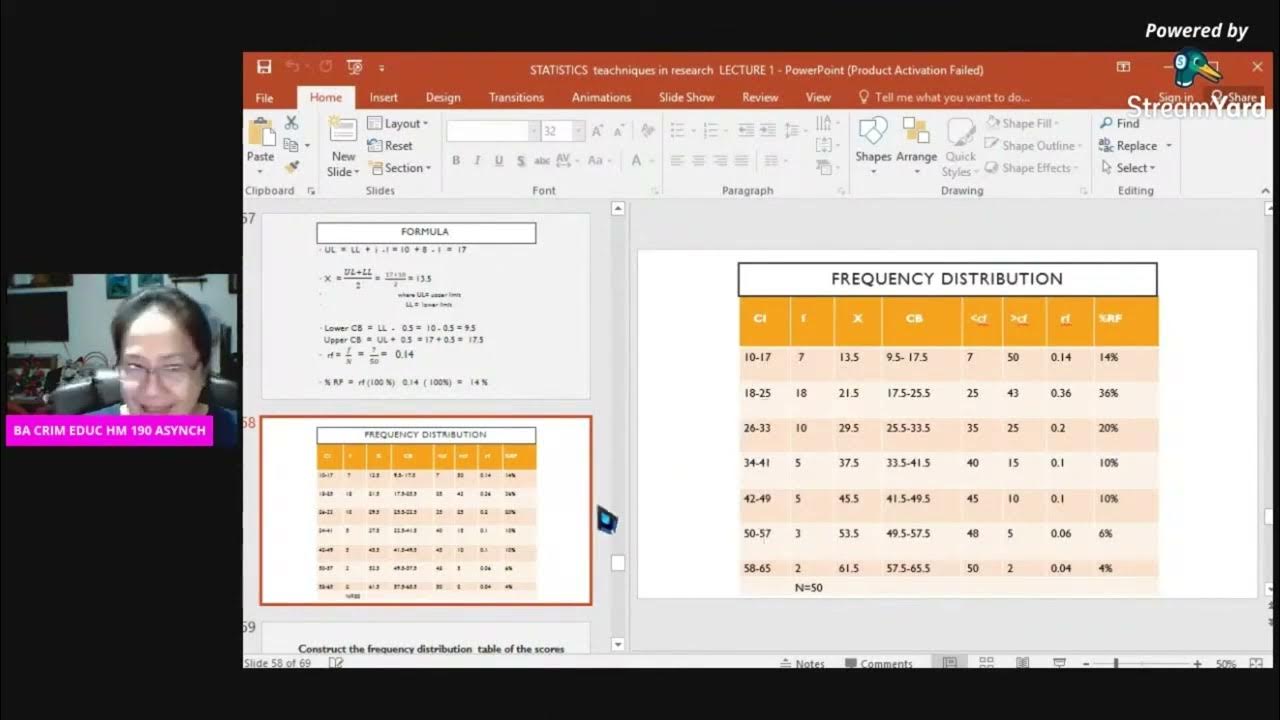Statistics Grade 10: Mean, mode, median
Summary
TLDRThis lesson covers the three key statistical concepts: mode, median, and mean. The mode is the number that appears most frequently, the median is the middle value when numbers are arranged in order, and the mean is the average of all numbers. The video explains each concept with simple examples and emphasizes the importance of rearranging numbers in order for accurate calculation. Additionally, it highlights a practical method for finding the median and illustrates how to calculate the mean by summing values and dividing by their count.
Takeaways
- 📚 The lesson covers three statistical measures: mode, median, and mean.
- 🔑 The mode is the most frequently occurring number in a set of data.
- 🔍 To remember 'mode', think of the word 'most'.
- 🔢 The median is the middle number in a sorted list of numbers.
- 🌐 To remember 'median', think of the word 'medium', as in 'small, medium, large'.
- 📈 The mean is the average of a set of numbers, calculated by adding all numbers and dividing by the count.
- 🕵️♂️ The mean is sometimes humorously associated with teachers being 'mean' due to the calculation effort.
- 📝 Before calculating these measures, numbers should be arranged from smallest to largest.
- ✍️ When arranging, cross out numbers as they are used to avoid double-counting.
- 🔬 The mode for the given data set does not exist because no number occurs more than once.
- ✂️ The median can be found by crossing out numbers until one remains, or by using the formula (n + 1) / 2 to find the position.
- 🧮 The mean for the provided data set is calculated to be 6.56 after summing all numbers and dividing by the count (9).
Q & A
What are the three key terms discussed in the lesson?
-The three key terms discussed are mode, median, and mean.
What does the mode represent?
-The mode represents the number that occurs the most frequently in a data set.
How can you remember what the median represents?
-You can remember the median by thinking of the word 'medium,' which implies the middle value.
Why is calculating the mean considered 'mean' according to the teacher?
-Calculating the mean is considered 'mean' because it involves a lot of work: adding all the numbers together and then dividing by the total number of items.
What is the proper way to find the median using a formula?
-The proper way to find the median using a formula is to use (n + 1) / 2, where n is the number of items in the data set.
In the example given, what is the mode of the numbers?
-In the example given, there is no mode because no single number occurs more frequently than the others.
What is the median of the given set of numbers?
-The median of the given set of numbers is 6.
How do you calculate the mean of a set of numbers?
-To calculate the mean, add all the numbers together and then divide by the total number of items in the set.
What is the mean of the example numbers provided in the lesson?
-The mean of the example numbers is 6.56.
What example is used to explain the concept of average in the lesson?
-An example using hockey team scores and another using a student's report card grades are used to explain the concept of average.
Why is it important to rearrange the numbers from smallest to largest when finding the median?
-It's important to rearrange the numbers from smallest to largest to accurately identify the middle value, or median.
Outlines

هذا القسم متوفر فقط للمشتركين. يرجى الترقية للوصول إلى هذه الميزة.
قم بالترقية الآنMindmap

هذا القسم متوفر فقط للمشتركين. يرجى الترقية للوصول إلى هذه الميزة.
قم بالترقية الآنKeywords

هذا القسم متوفر فقط للمشتركين. يرجى الترقية للوصول إلى هذه الميزة.
قم بالترقية الآنHighlights

هذا القسم متوفر فقط للمشتركين. يرجى الترقية للوصول إلى هذه الميزة.
قم بالترقية الآنTranscripts

هذا القسم متوفر فقط للمشتركين. يرجى الترقية للوصول إلى هذه الميزة.
قم بالترقية الآن5.0 / 5 (0 votes)






